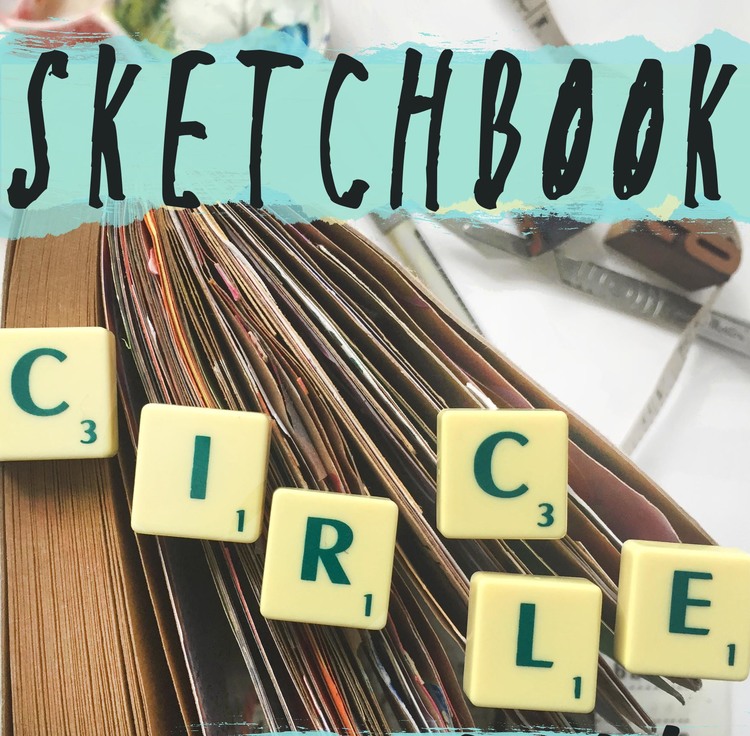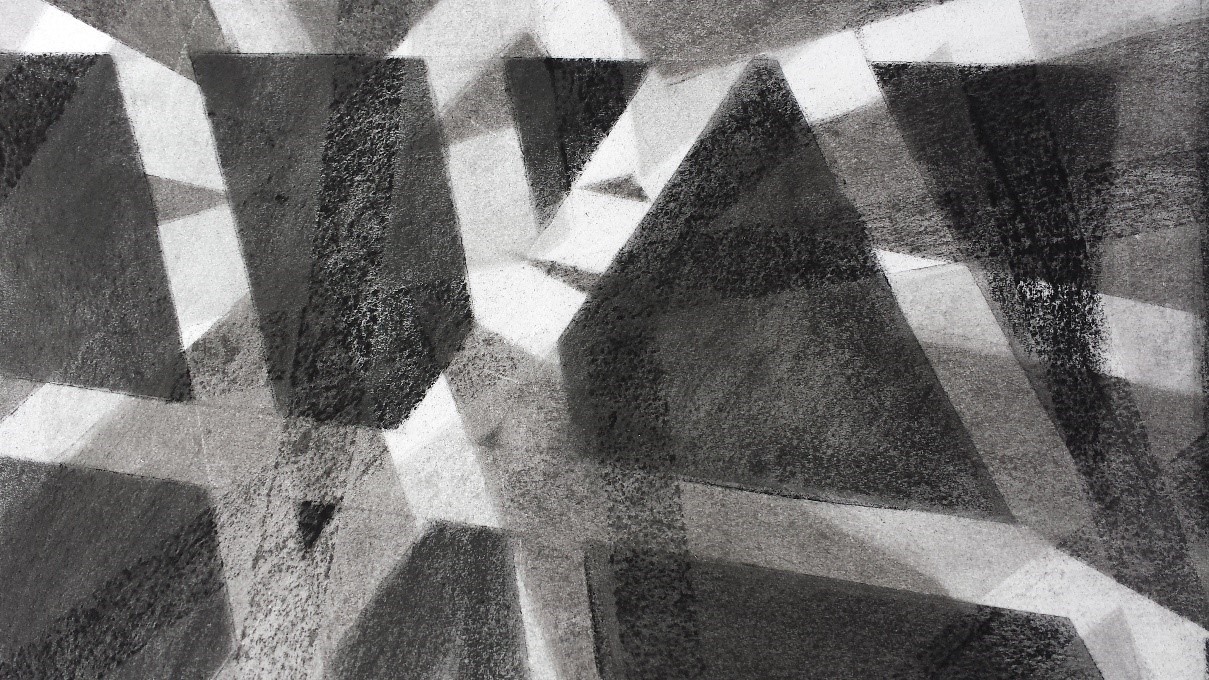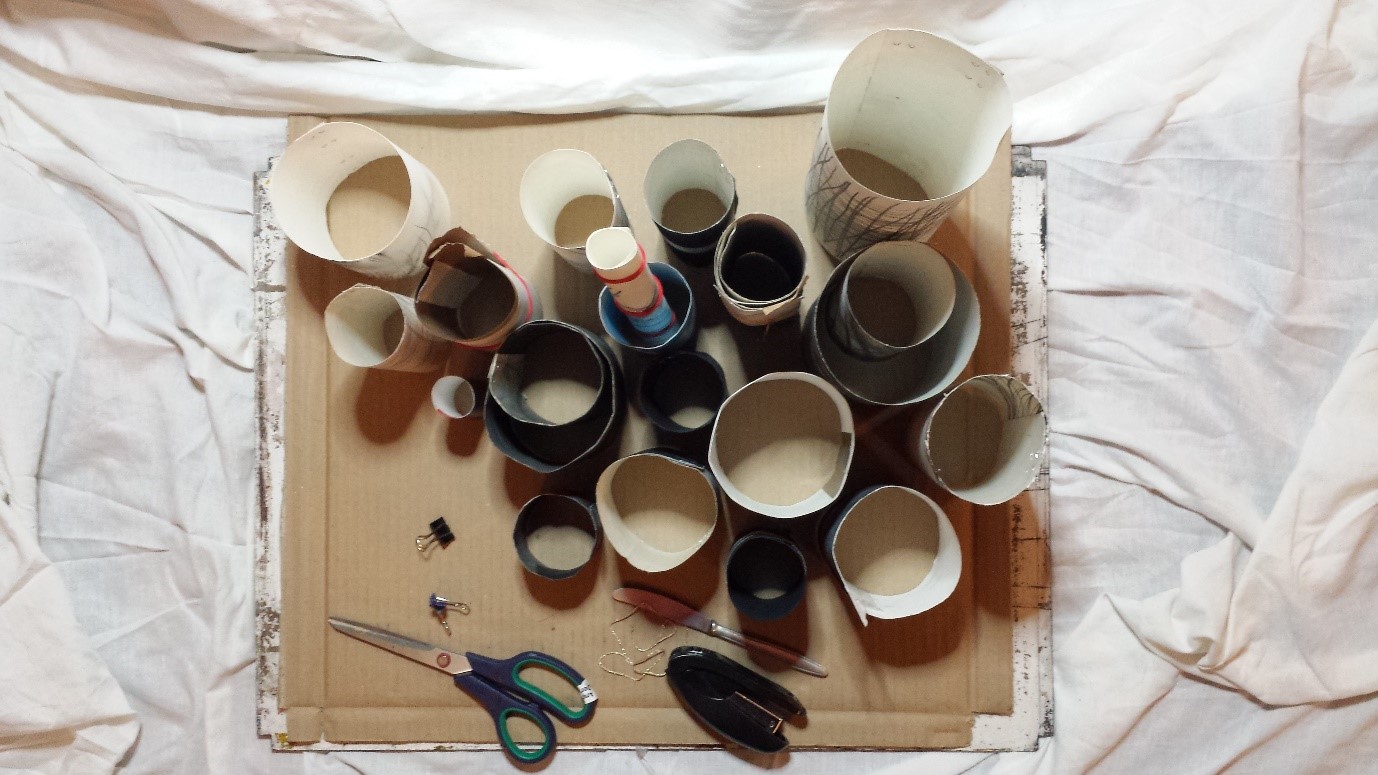Can you describe your work in a few words?
Intuitive, process-oriented, abstract, conceptual.
What inspires you?
I am inspired by so many things! Old paper, cardboard, old books, reclaimed paper materials – scrap store stuff. Textures; muted colours; sounds; nature; graffiti and street art; overlooked and abandoned objects and disused spaces. Things with a narrative, a memory, a footprint.
How do you find a balance between teaching and making art?
Sometimes it’s a struggle! I’m a single mum, and I’m in the process of setting up a Creative Arts organization with a friend so that we can deliver our own community arts projects. And of course, working! I’ve just left my regular job for freelancing, so I’m juggling everything at the moment. I make time to make work each day, even if it’s only 5 minutes to doodle or to add to an existing piece. I also spend some time writing each day. It’s often snatched time between bath time and bed time, or first thing in the morning, but I need this time to let my brain shift down a gear, almost like meditating.
What materials could you not live without?
Water soluble graphite, charcoal and gesso. Acrylic paints. Pencils and notebooks.
What would your dream project be?
I was in hospital briefly last Christmas as a day patient, and in the foyer of the hospital there were some beautiful large-scale, abstract murals, which really inspired me… there are also a few wonderful examples of murals in Coventry city centre. I would love to be commissioned to create a piece of art to go in a public space – particularly somewhere like the hospital, where it would have a positive impact on people’s wellbeing. I’d like to do it as a participatory project in partnership with patients or service users, empowering people and giving them a sense of ownership and control over their environment.
Or I’d love to do a residency to make a body of work or explore an idea; I’d love to see what impact it had on my current practice and work to have access to ‘proper’ studio facilities, and I think it would push me out of my comfort zone, which I think is necessary for personal and professional development.
How does your creative practice work?
My creative practice is based largely around process, exploring ideas about identity, memory, personal narrative. I am fascinated by the endless possible variations on a single theme.
I make large drawings on sheets of lining paper or reclaimed cardboard. I mostly use gesso, charcoal, water soluble graphite and acrylic paint – I like to use materials with which there is a physical involvement and connection, and my drawings emerge as I work, exploring and expressing process and movement.
I then often tear the drawings down to make other things – I made some of my larger pieces into tubes with ‘windows’ cut into them, which I lit from the inside – windows into the mind, shedding light onto the process, making thinking visible. I like to use recycled paper materials, and I repurpose a lot of my drawings. I like the way they change and evolve, and take on a life of their own. I like to take lots of photographs of my work as I go along, and manipulate the images using photo editing apps on my phone – infinite possibilities from a single starting point – like personal identity.
I also love to write; I keep a handwritten notebook, and I have a blog about my art work. I like the blogging format; I like the fact that I can scroll back and see how my work has changed and developed over time. I also love the handwritten format – I find the process of writing by hand meditative – the rhythmic motion of my hand moving across the page making those little marks, recognizably my handwriting, but with slight variations each time.

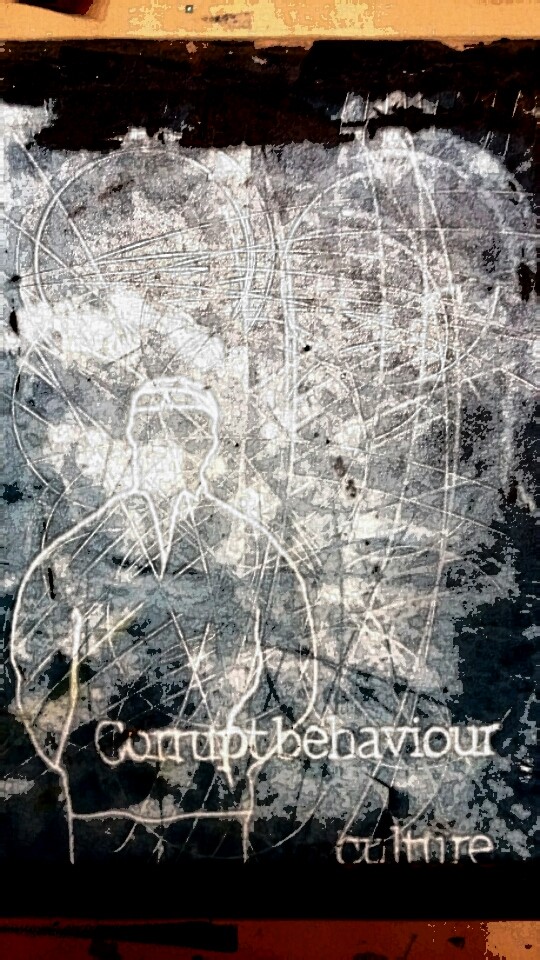
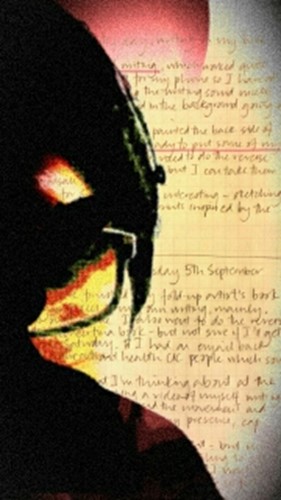
What’s the best piece of creative advice you’ve been given?
Before I started the Artist Teacher Scheme, I was a bit stuck in a place where I felt my parental and financial responsibilities had to take precedence over my art practice. One of the workshop facilitators at an artist educators’ event at Birmingham City University said to me, “Give yourself permission to do it”. I think I really needed to hear that! Another of the facilitators, who is now my course tutor, Elena, listened patiently to my excuses and wittering and then told me, “Just do it anyway.” Both pieces of advice have stuck with me this year, and I’ve not looked back!
www.tillymackdraws.wordpress.com
www.facebook.com/tillymackdraws
